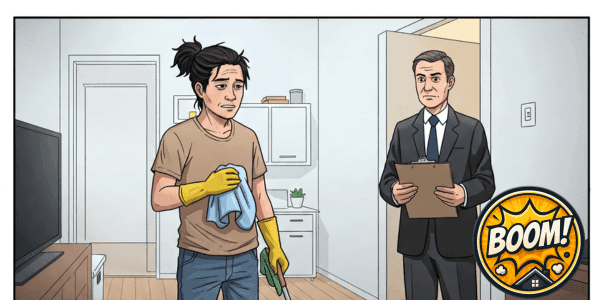Tenant Guide to Managing Repairs
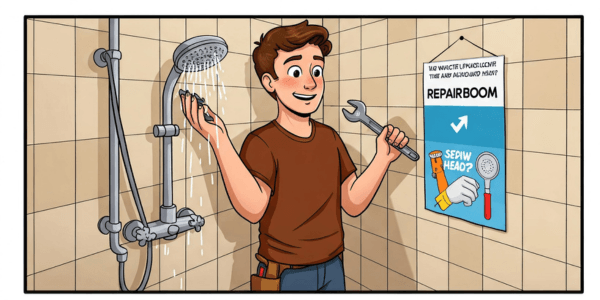
- Tenant Guide to Managing Repairs
- Introduction
- Tenant Responsibilities vs. Landlord Repair Responsibilities
- Reporting a Repair Issue to Your Landlord
- Tracking and Following Up on Maintenance Requests
- Allowing Entry for Repairs
- When Landlord Repairs Aren't Made: Addressing Uninhabitable Conditions
- Preventative Maintenance Tips for Tenants
- The Power of Documentation
- Conclusion – Tenant Guide to Managing Repairs
Introduction
Dripping faucets, broken appliances, mysterious leaks… Dealing with repairs and maintenance issues in your rental property can quickly turn your comfortable space into a source of stress. It’s frustrating when something breaks, and knowing how to get your landlord to make repairs effectively can feel confusing. But you don’t have to navigate it alone. This guide cuts through the confusion, giving you the clear steps for managing rental repairs, understanding your landlord’s responsibilities, and ensuring necessary fixes get done to keep your home safe and comfortable
Tenant Responsibilities vs. Landlord Repair Responsibilities
Understanding who is responsible for fixing what is the first step in managing rental property maintenance.
Tenant’s Role in Maintenance
Tenants are generally responsible for:
- Reporting issues promptly.
- Performing minor maintenance tasks (e.g., changing lightbulbs, replacing air filters unless otherwise agreed).
- Repairing damage caused by the tenant, their family, or guests (beyond normal wear and tear).
- Keeping the property clean and preventing pest infestations through good housekeeping.
Landlord’s Duty to Repair
Landlords have a legal obligation to keep the rental property in a habitable condition. This means they are responsible for major Landlord Repairs and structural issues, including:
- Maintaining essential services (plumbing, heating, electricity).
- Repairing structural elements (roof, walls, foundation).
- Fixing issues related to wear and tear that affect safety or habitability.
- Exterminating pests in most cases, especially if present before move-in or in multi-unit buildings.
Learn more about what constitutes habitable conditions in our guide: [Link to Habitable Conditions Article]
Reporting a Repair Issue to Your Landlord
Knowing how to formally report issues is crucial for getting landlord repairs done.
Promptness and Method
Report issues as soon as you notice them. Always follow the reporting method specified in your lease agreement. If the lease doesn’t specify, or even if it does, use a method that provides a written record.
- Initial Report: A quick phone call might be okay for simple things, but always follow up in writing.
- Preferred Method: Email, a tenant portal system, or a written letter (sent certified mail for critical issues) are best for reporting repair issues to landlord.
What to Include in Your Report
Be clear, detailed, and polite when you report repair issues.
- Your Contact Information: Name, unit number.
- Date of Report: Essential for tracking.
- Clear Description of the Problem: What is broken? What is happening? (e.g., “Leaky faucet under the kitchen sink,” “Heating system not turning on”).
- Location of the Problem: Be specific (e.g., “Master bathroom sink,” “Window in the second bedroom”).
- Severity: Is it an emergency (fire, flood, gas leak) or a standard repair?
- Photos or Videos: Extremely helpful evidence of the issue.
- Requested Action: Clearly state you are requesting a repair.
- Date you Noticed the Issue: Helps establish a timeline.
Why Written Communication is Crucial
Using written communication (email, text if allowed by lease/law and documented, letter) is vital because:
- It provides a timestamped record of your report.
- It proves you notified the landlord.
- It clarifies the details of the maintenance request.
- It’s essential documentation if you need to take further action later.
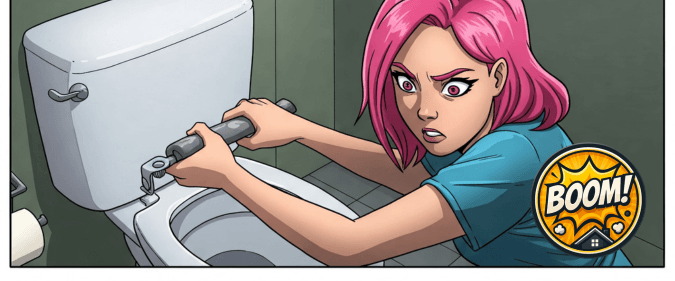
Tracking and Following Up on Maintenance Requests
After reporting, track your request and follow up if necessary.
- Note the date you sent the report.
- Keep copies of all communication.
- Landlords are typically required to make repairs within a reasonable time, which varies by state and the severity of the issue. What’s reasonable for a leaky faucet is different from a broken heater in winter.
- If you don’t receive a response or the repair is delayed, send a polite follow-up email or letter, referencing your original request and its date.
Allowing Entry for Repairs
Your landlord will likely need to enter your unit to make Landlord Repairs.
- Landlords must typically provide proper notice to enter for repairs (usually 24 hours written notice, depending on your state).
- You cannot unreasonably deny entry for legitimate repair purposes.
- Coordinate a time that works for both of you if possible, but be aware landlords usually have the right to enter during normal business hours with proper notice.
Find out more about your rights regarding landlord entry in our guide
When Landlord Repairs Aren’t Made: Addressing Uninhabitable Conditions
If despite your efforts, essential Landlord Repairs are not made and the condition affects the safety or habitability of your home, you have options. Living in uninhabitable conditions is not something you have to accept.
- Do NOT stop paying rent or make repairs yourself without first understanding your state’s specific laws and consulting legal advice. Many states have strict procedures (like “repair and deduct” or rent withholding) that must be followed precisely to avoid eviction.
- Send a formal written notice (often certified mail) demanding the repairs be made by a specific, reasonable deadline. Reference your previous communications.
- If conditions persist, you may need to seek assistance from a local tenant advocacy group or legal aid.
Preventative Maintenance Tips for Tenants
While Landlord Repairs are their responsibility, tenants play a role in preventing some issues.
- Report minor issues before they become major problems.
- Keep drains clear of debris.
- Change air filters regularly if that is your responsibility per the lease.
- Use exhaust fans in bathrooms and kitchens to reduce moisture.
- Report any signs of pests immediately.
For step-by-step instructions on simple maintenance tasks you might handle or want to understand, check out RepairBoom.com’s extensive library of repair guides!
The Power of Documentation
Throughout your tenancy, especially when dealing with tenant repairs and maintenance, documentation is your best friend.
- Keep copies of your lease and any addendums.
- Keep copies of all written communication with your landlord (emails, letters, text messages if applicable).
- Keep dated photos and videos of repair issues and the results (or lack thereof).
- Keep records of when you reported issues and when repairs were (or weren’t) made.
This creates a clear history that is invaluable if disputes arise or you need to pursue legal options regarding Landlord Repairs or uninhabitable conditions.
Conclusion – Tenant Guide to Managing Repairs
Successfully managing repairs and maintenance is a critical part of a smooth tenancy. By understanding the division of responsibility, promptly and correctly reporting repair issues to your landlord using written communication, maintaining thorough documentation, and knowing your rights regarding uninhabitable conditions, you empower yourself to ensure your rental property remains a safe and habitable home. Don’t hesitate to utilize resources like tenant advocacy groups or legal aid if you encounter significant issues. Your proactive efforts in managing rental property maintenance protect both your living space and your rights as a tenant.
FAQ – Tenant Guide to Managing Repairs
Who is responsible for making necessary repairs in my rental property?

Generally, your landlord is responsible for making major repairs and ensuring your rental property remains in a safe and habitable condition. Tenant repairs are typically limited to minor maintenance or damage caused by the tenant. Landlords must maintain essential systems like plumbing, heating, and electrical, and address issues affecting health and safety like pest infestations or structural problems. Tenants are usually responsible for routine upkeep and fixing damage resulting from their own negligence or misuse
What is the most effective way to report a repair issue to my landlord?

The most effective way to report repair issues to your landlord is always by providing written notice. This could be via email, a tenant portal, or a formal letter, ensuring you have documentation of your request. Include specific details about the problem, its location, and how it affects your use of the property. Keeping a copy of this written notice is crucial for your records.
How quickly does my landlord have to respond to or complete repairs?

Landlords are required to make repairs within a reasonable time. This timeframe depends on the severity of the issue; urgent repairs affecting health or safety (uninhabitable conditions) require much faster action than minor maintenance. Urgent issues like lack of heat in winter or major plumbing leaks often require response within 24-48 hours, while non-urgent repairs may have a timeframe of 7 to 30 days depending on local laws and the repair’s complexity.
What should I do if my landlord ignores my requests for repairs?
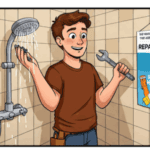
If your landlord won’t make necessary repairs, especially for conditions affecting habitability, continue sending written notice and keep thorough documentation. Consult a tenant advocacy group or seek legal advice to understand your options. Depending on your local laws and the issue’s severity, further steps could include contacting code enforcement or exploring legal remedies like “repair and deduct” or rent withholding, though these have specific requirements and risks.
Is sending written notice for every repair request really necessary?
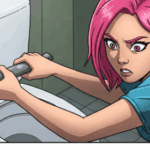
Yes, sending written notice is crucial for managing rental repairs. It serves as vital documentation that you notified your landlord, protecting your rights if there are disputes or delays in getting repairs done. Written notice establishes a timeline and provides proof that you fulfilled your responsibility to inform the landlord of the needed repair
What is the difference between tenant maintenance and landlord repairs?

Tenant maintenance usually covers routine upkeep like changing lightbulbs. Landlord repairs involve fixing structural issues, essential systems (plumbing, heating), and addressing problems that affect the habitable condition of the rental property. Think of tenant maintenance as preventing minor issues and keeping the unit clean, while landlord repairs address larger, more complex problems necessary for the property to be safe and livable.
Other Articles by Louis Oconnor
Completing Your Move-In Condition Report | Free Guide
Landlord Not Renewing Lease? Understanding Your Rights | Free
Move-Out Inspection: What Your Landlord Is Really Looking For | Free Guide



